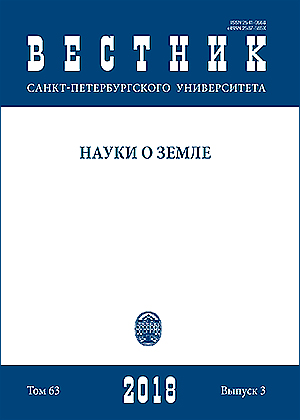Localization of areas of deep convection in the Nordic seas, the Labrador Sea and the Irminger Sea
DOI:
https://doi.org/10.21638/spbu07.2018.306Abstract
Using EN4 data-set from 1950 to 2015, the areas of the most intense deep convective mixing are identified as the maximum depths of the upper mixed layer during the cold season. It has been shown that the areas with the maximum registered convection depth of 1500–2000 m are found in the Greenland basin (73°–76° N, 5° W-1° E) and the Boreas basin (77° N, 1–2.5° W). This refines the areas of the deep convection derived from in situ data and results of hydrodynamic modeling. It has been shown that the previously separated in literature areas of deep convection in the Labrador Sea (55–59° N 50–56° W) and the Irminger Sea (57–60° N, 35–43° W), are in fact linked into one region by the episodic re-occurrence of the deep convection (1000 m and more) south of Greenland (between 56°–58° N). The intra-annual variability of deep convection was studied over the whole period of observations of 1950–2015. It is shown
that the maximum depths of the upper mixed layer in all three seas was usually registered between December and May. The most often convection reaches the maximum depth in the Labrador and Irminger seas in March, and in the Greenland Sea — in April.
Keywords:
North Atlantic, deep convection, EN4 data-set, depth of upper mixed layer, Labrador, Irminger, Greenland and Norwegian Seas
Downloads
References
References
Downloads
Published
How to Cite
Issue
Section
License
Articles of "Vestnik of Saint Petersburg University. Earth Sciences" are open access distributed under the terms of the License Agreement with Saint Petersburg State University, which permits to the authors unrestricted distribution and self-archiving free of charge.






